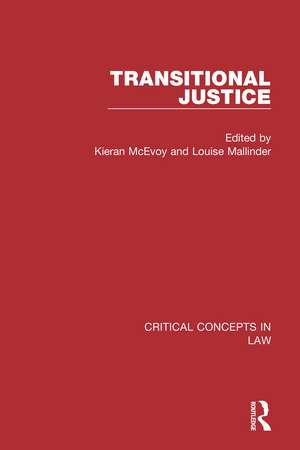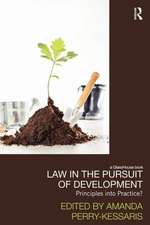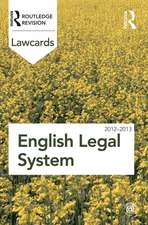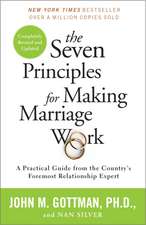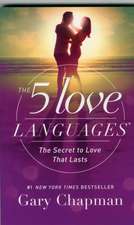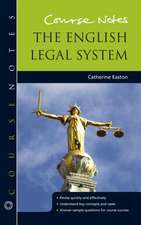Transitional Justice: Critical Concepts in Law
Editat de Kieran Mcevoy, Louise Mallinderen Limba Engleză Hardback – 6 sep 2016
The collection covers themes such as: truth and history; acknowledgement, reconciliation, and forgiveness; retribution, restorative justice and reparations; and democracy, state-building, identity, and civil society. Fully indexed and with a comprehensive introduction, newly written by the editors, Transitional Justice is an essential work of reference.
Din seria Critical Concepts in Law
- 27%
 Preț: 7902.24 lei
Preț: 7902.24 lei - 34%
 Preț: 4244.72 lei
Preț: 4244.72 lei - 34%
 Preț: 6527.09 lei
Preț: 6527.09 lei - 34%
 Preț: 6735.52 lei
Preț: 6735.52 lei - 34%
 Preț: 6732.23 lei
Preț: 6732.23 lei - 34%
 Preț: 6725.70 lei
Preț: 6725.70 lei - 36%
 Preț: 4327.12 lei
Preț: 4327.12 lei - 14%
 Preț: 6462.86 lei
Preț: 6462.86 lei - 36%
 Preț: 4327.12 lei
Preț: 4327.12 lei - 34%
 Preț: 5920.44 lei
Preț: 5920.44 lei - 34%
 Preț: 7030.26 lei
Preț: 7030.26 lei - 34%
 Preț: 7300.37 lei
Preț: 7300.37 lei - 34%
 Preț: 6740.82 lei
Preț: 6740.82 lei - 34%
 Preț: 6742.67 lei
Preț: 6742.67 lei
Preț: 6740.40 lei
Preț vechi: 10635.69 lei
-37% Nou
Puncte Express: 10111
Preț estimativ în valută:
1290.18€ • 1401.90$ • 1084.45£
1290.18€ • 1401.90$ • 1084.45£
Carte tipărită la comandă
Livrare economică 21 aprilie-05 mai
Preluare comenzi: 021 569.72.76
Specificații
ISBN-13: 9780415719919
ISBN-10: 0415719917
Pagini: 1562
Dimensiuni: 156 x 234 mm
Greutate: 3.08 kg
Ediția:1
Editura: Taylor & Francis
Colecția Routledge
Seria Critical Concepts in Law
Locul publicării:Oxford, United Kingdom
ISBN-10: 0415719917
Pagini: 1562
Dimensiuni: 156 x 234 mm
Greutate: 3.08 kg
Ediția:1
Editura: Taylor & Francis
Colecția Routledge
Seria Critical Concepts in Law
Locul publicării:Oxford, United Kingdom
Public țintă
Postgraduate and UndergraduateCuprins
Volume I: Origins, Boundaries, and Methods in Transitional Justice
Part 1: The Goals of Transitional Justice
1. C. Bell, ‘Transitional Justice, Interdisciplinarity and the State of the "Field" or "Non-Field"’, International Journal of Transitional Justice, 2009, 3, 5–27.
2. P. Clark, ‘Establishing a Conceptual Framework: Six Key Transitional Justice Themes’, in P. Clark and Z. D. Kaufman (eds.), After Genocide: Transitional Justice, Post-Conflict Reconstruction and Reconciliation in Rwanda and Beyond (Hurst Publishers, 2008), pp. 191–205.
3. P. De Greiff, ‘Theorizing Transitional Justice’, in M. S. Williams, R. Nagy, and J. Elster (eds.), Transitional Justice (New York University Press, 2012), pp. 31–77.
4. P. Gready and S. Robins, ‘From Transitional to Transformative Justice: A New Agenda for Practice’, International Journal of Transitional Justice, 2014, 8, 3, 339–61.
5. B. A. Leebaw, ‘The Irreconcilable Goals of Transitional Justice’, Human Rights Quarterly, 2008, 30, 95–118.
Part 2: The Field’s Origins and Antecedents
6. P. Arthur, ‘How "Transitions" Reshaped Human Rights: A Conceptual History of Transitional Justice’, Human Rights Quarterly, 2009, 31, 2, 321–67.
7. L. M. Balasco, ‘The Transitions of Transitional Justice: Mapping the Waves from Promise to Practice’, Journal of Human Rights, 2013, 12, 198–216.
8. J. E. Méndez, ‘Accountability for Past Abuses’, Human Rights Quarterly, 1997, 19, 255–82.
9. D. F. Orentlicher, ‘Settling Accounts Revisited: Reconciling Global Norms with Local Agency’, International Journal of Transitional Justice, 2007, 1, 1, 10–22.
10. R. Teitel, ‘Human Rights in Transition: Transitional Justice Genealogy’, Harvard Human Rights Journal, 2003, 16, 69–94.
Part 3: Role of Law, Legalism, and Legal Pluralism in Transitional Justice
11. K. McEvoy, ‘Beyond Legalism: Towards a Thicker Understanding of Transitional Justice’, Journal of Law and Society, 2008, 34, 4, 411–44.
12. D. Gray, ‘Transitional Disclosures: What Transitional Justice Reveals about "Law"’, in A. Sarat (ed.), Transitions: Legal Change, Legal Meanings (University of Alabama Press, 2011), pp. 147–87.
13. F. Ni Aolain and M. Hamilton, ‘Gender and the Rule of Law in Transitional Societies’, Minnesota Journal of International Law, 2009, 18, 380–402.
Volume II: ConceptualiZing ‘Transition’
Part 1: Building and Challenging General Theories of Transition
14. C. Bell and C. O’Rourke, ‘Does Feminism Need a Theory of Transitional Justice? An Introductory Essay’, International Journal of Transitional Justice, 2007, 1, 1, 23–44.
15. T. O. Hansen, ‘Transitional Justice: Toward a Differentiated Theory’, Oregon Review of International Law, 2011, 13, 1, 1–46.
16. P. McAuliffe, ‘Transitional Justice’s Expanding Empire: Reasserting the Value of the Paradigmatic Transition’, Journal of Conflictology, 2011, 2, 2, 32–44.
Part 2: Transitions from Dictatorship
17. T. Carothers, ‘The End of the Transition Paradigm?’, Journal of Democracy, 2002, 13, 1, 5–21.
18. C. S. Nino, ‘Political Problems of Trials for Human Rights Violations’, Radical Evil on Trial (Yale University Press, 1996), pp. 107–34.
19. J. Zalaquett, ‘Balancing Ethical Imperatives and Political Constraints: The Dilemma of New Democracies Confronting Past Human Rights Violations’, Hastings Law Journal, 1992, 43, 1425–38.
Part 3: Conflict, Peace, and Transition
20. P. Akhavan, ‘Are International Criminal Tribunals a Disincentive to Peace? Reconciling Judicial Romanticism with Political Realism’, Human Rights Quarterly, 2009, 31, 3, 624–54.
21. Anonymous, ‘Human Rights in Peace Negotiations’, Human Rights Quarterly, 1996, 18, 249–57.
22. P. Engstrom, ‘Transitional Justice and Ongoing Conflict’, in C. L. Sriram, J. Garcia-Godos, J. Herman, and O. Martin-Ortega (eds.), Transitional Justice and Peacebuilding on the Ground: Victims and Ex-Combatants (Routledge, 2013), pp. 41–61.
23. D. Sharp, ‘Beyond the Post-Conflict Checklist; Linking Peacebuilding and Transitional Justice Through the Lens of Critique’, Chicago Journal of International Law, 2013, 14, 1, 165–96.
Part 4: Beyond Paradigmatic Transitions: Transitional Justice in Democracies, Repressive Regimes, and and Post-transition
24. J. Balint, J. Evans, and N. McMillan, ‘Rethinking Transitional Justice, Redressing Indigenous Harm: A New Conceptual Approach’, International Journal of Transitional Justice, 2014, 8, 194–216.
25. C. Collins, Post-transitional Justice: Human Rights Trials in Chile and El Salvador (Pennsylvania State University Press, 2010), pp. 21–35.
26. B. Grodsky, ‘Justice Without Transition: Truth Commissions in the Context of Repressive Rule’, Human Rights Review, 2008, 9, 3, 281–97.
27. F. Ní Aoláin and C. Campbell, ‘The Paradox of Transition in Conflicted Democracies’, Human Rights Quarterly, 2005, 27, 1, 172–213.
VOLUME III: FORMS AND IMPACT OF TRANSISIONAL JUSTICE
Part 1: Truth Recovery
28. E. Brahm, ‘Uncovering the Truth: Examining Truth Commission Success and Impact’, International Studies Perspectives, 2007, 8, 16–35.
29. E. Daly, ‘Truth Skepticism: An Inquiry into the Value of Truth in Times of Transition’, International Journal of Transitional Justice, 2008, 2, 1, 23–41.
30. P. B. Hayner, Unspeakable Truths: Transitional Justice and the Challenge of Truth Commissions, 2nd edn. (Routledge, 2010), pp. 19–27.
31. P. Lundy and M. McGovern, ‘Whose Justice? Rethinking Transitional Justice from the Bottom Up’, Journal of Law and Society, 2008, 35, 2, 265–92.
Part 2: Justice: Retributive, Restorative, and Redistributive
32. K. Clamp and J. Doak, ‘More than Words: Restorative Justice Concepts in Transitional Justice Settings’, International Criminal Law Review, 2012, 12, 3, 339–60.
33. M. Osiel, ‘Why Prosecute? Critics of Punishment for Mass Atrocity’, Human Rights Quarterly, 2000, 22, 1, 118–47.
34. D. Sankey, ‘Towards Recognition of Subsistence Harms: Reassessing Approaches to Socioeconomic Forms of Violence in Transitional Justice’, International Journal of Transitional Justice, 2014, 8, 1, 121–40.
35. M. P. Scharf, ‘The Letter of the Law: The Scope of the International Legal Obligation to Prosecute Human Rights Crimes’, Law and Contemporary Problems, 1996, 59, 4, 41–61.
36. K. Sikkink, The Justice Cascade: How Human Rights Prosecutions are Changing World Politics (W. W. Norton & Co., 2011), pp. 96–127.
37. J. Webber, ‘Forms of Transitional Justice’, in M. S. Williams, R. Nagy, and J. Elster (eds.), Transitional Justice (New York University Press, 2012), pp. 98–128.
Part 3: Reparations
38. L. Laplante, ‘The Plural Justice Aims of Reparations’, in S. Buckley-Zistel et al. (eds.), Transitional Justice Theories (Routledge, 2013), pp. 66–84.
39. N. Roht-Arriaza, Reparations and Economic, Social, and Cultural Rights: Justice and Economic Violence in Transition (Springer, 2014), pp. 109–38.
40. C. Rose, ‘An Emerging Norma: The Duty of States to Provide Reparations for Human Rights Violations by Non-State Actors’, Hastings Int’l & Comp. L. Rev., 2010, 33, 307–44
Part 4: Vetting, Lustration, and Security-Sector Reform
41. F. Andreu-Guzmán, ‘Due Process and Vetting’, in A. Mayer-Rieckh and P. de Greiff (eds.), Vetting as Prevention: Vetting Public Employees in Transitional Societies (Social Science Research Council, 2007), pp. 449–81.
42. P. de Greiff, ‘Vetting and Transitional Justice’, in A. Mayer-Rieckh and P. de Greiff (eds.), Vetting as Prevention: Vetting Public Employees in Transitional Societies (Social Science Research Council, 2007), pp. 523–44.
PART 5: Amnesties
43. A. Freeman and M. Pensky, ‘The Amnesty Controversy in International Law’, in F. Lessa and L. A. Payne (eds.), Amnesty in the Age of Human Rights Accountability: Comparative and International Perspectives (Cambridge University Press, 2012), pp. 42–65.
44. L. Mallinder, ‘Amnesties in the Pursuit of Reconciliation, Peacebuilding and Restorative Justice’, in D. Philpott and J. Llewellyn (eds.), Restorative Justice, Reconciliation and Peacebuilding (Oxford University Press, 2014), pp. 138–73.
45. R. Poole, ‘Enacting Oblivion’, International Journal of Politics, Culture and Society, 2009, 22, 2, 149–57.
Part 6: Apologies and Acknowledegement
46. R. Howard-Hassmann, ‘Official Apologies’, Transitional Justice Review, 2013, 1, 1, 9–24
47. R. Teitel, ‘The Transitional Apology’, in E. Barkan and A. Karn (eds.), Taking Wrongs Seriously: Apologies and Reconciliation (Stanford University Press, 2006), pp. 101–15
Part 7: Impact and Evaluation
48. G. Dancy, ‘Impact Assessment, Not Evaluation: Defining a Limited Role for Positivism in the Study of Transitional Justice’, International Journal of Transitional Justice, 2010, 4, 3, 355–76.
49. H. van der Merwe, ‘Delivering Justice During Transition: Research Challenges’, in H. van der Merwe, V. Baxter, and A. R. Chapman (eds.), Assessing the Impact of Transitional Justice: Challenges for Empirical Research (United States Institute for Peace, 2009), pp. 115–42.
Volume IV: Transitional-Justice Actors
Part 1: Civil Society
50. A. P. Boesenecker and L. Vinjamuri, ‘Lost in Translation? Civil Society, Faith-Based Organizations and the Negotiation of International Norms’, International Journal of Transitional Justice, 2011, 5, 3, 345–65.
51. J. Subotić, ‘The Transformation of International Transitional Justice Advocacy’, International Journal of Transitional Justice, 2012, 6, 1, 106–25.
Part 2: Victims
52. T. Madlingozi, ‘Good Victim, Bad Victim: Apartheid’s Beneficiaries, Victims and the Struggle for Social Justice’, in W. le Roux and K. van Marle (eds.), Law, Memory and the Legacy of Apartheid: Ten Years After AZAPO v. President of South Africa (Pretoria University Law Press, 2007), pp. 107–26.
53. K. McEvoy and K. McConnachie, ‘Victims and Transitional Justice Voice, Agency and Blame’, Social & Legal Studies, 2013, 22, 4, 489–513
Part 3: Ex-Combatants
54. T. Govier and W. Verwoerd, ‘How Not to Polarize "Victims’ and "Perpetrators"’, Peace Review, 2004, 16, 3, 371–7
55. L. Waldorf, ‘Getting the Gunpowder Out of Their Heads: The Limits of Rights-Based DDR’, Human Rights Quarterly, 2013, 35, 3, 701–19.
Part 4: Gender
56. K. M. Franke, ‘Gendered Subjects of Transitional Justice’, Columbia Journal of Gender & Law, 2006, 15, 3, 813–28.
57. B. Hamber, ‘Masculinity and Transitional Justice: An Exploratory Essay’, International Journal of Transitional Justice, 2007, 1, 3, 375–90.
58. F. Ní Aoláin, ‘Women, Security, and the Patriarchy of Internationalized Transitional Justice’, Human Rights Quarterly, 2009, 31, 4, 1055–85.
Part 5: Children
59. J. Ciurlizza, ‘And the Children Learned Not to Cry: Stories About Children and Transitional Justice in Latin America’, in I. Derluyn et al. (eds.), Re-Member: Rehabilitation, Reintegration and Reconciliation of War-Affected Children (Intersentia, 2012), pp. 105-125
60. M. A. Drumbl, Reimagining Child Soldiers in International Law and Policy (Oxford University Press, 2012), pp. 102–33
Part 6: Judges and Lawyers
61. D. Dyzenhaus, ‘Judicial Independence, Transitional Justice and the Rule of Law’, Otago Law Review, 2003, 10, 3, 345–69.
62. H. Klug, ‘Local Advocacy, Global Engagement: The Impact of Land Claims Advocacy on the Recognition of Property Rights in the South African Constitution’, in A. Sarat and S. Scheingold (eds.), Cause Lawyering and the State in a Global Era (Oxford University Press, 2001), pp. 264–87.
Part 1: The Goals of Transitional Justice
1. C. Bell, ‘Transitional Justice, Interdisciplinarity and the State of the "Field" or "Non-Field"’, International Journal of Transitional Justice, 2009, 3, 5–27.
2. P. Clark, ‘Establishing a Conceptual Framework: Six Key Transitional Justice Themes’, in P. Clark and Z. D. Kaufman (eds.), After Genocide: Transitional Justice, Post-Conflict Reconstruction and Reconciliation in Rwanda and Beyond (Hurst Publishers, 2008), pp. 191–205.
3. P. De Greiff, ‘Theorizing Transitional Justice’, in M. S. Williams, R. Nagy, and J. Elster (eds.), Transitional Justice (New York University Press, 2012), pp. 31–77.
4. P. Gready and S. Robins, ‘From Transitional to Transformative Justice: A New Agenda for Practice’, International Journal of Transitional Justice, 2014, 8, 3, 339–61.
5. B. A. Leebaw, ‘The Irreconcilable Goals of Transitional Justice’, Human Rights Quarterly, 2008, 30, 95–118.
Part 2: The Field’s Origins and Antecedents
6. P. Arthur, ‘How "Transitions" Reshaped Human Rights: A Conceptual History of Transitional Justice’, Human Rights Quarterly, 2009, 31, 2, 321–67.
7. L. M. Balasco, ‘The Transitions of Transitional Justice: Mapping the Waves from Promise to Practice’, Journal of Human Rights, 2013, 12, 198–216.
8. J. E. Méndez, ‘Accountability for Past Abuses’, Human Rights Quarterly, 1997, 19, 255–82.
9. D. F. Orentlicher, ‘Settling Accounts Revisited: Reconciling Global Norms with Local Agency’, International Journal of Transitional Justice, 2007, 1, 1, 10–22.
10. R. Teitel, ‘Human Rights in Transition: Transitional Justice Genealogy’, Harvard Human Rights Journal, 2003, 16, 69–94.
Part 3: Role of Law, Legalism, and Legal Pluralism in Transitional Justice
11. K. McEvoy, ‘Beyond Legalism: Towards a Thicker Understanding of Transitional Justice’, Journal of Law and Society, 2008, 34, 4, 411–44.
12. D. Gray, ‘Transitional Disclosures: What Transitional Justice Reveals about "Law"’, in A. Sarat (ed.), Transitions: Legal Change, Legal Meanings (University of Alabama Press, 2011), pp. 147–87.
13. F. Ni Aolain and M. Hamilton, ‘Gender and the Rule of Law in Transitional Societies’, Minnesota Journal of International Law, 2009, 18, 380–402.
Volume II: ConceptualiZing ‘Transition’
Part 1: Building and Challenging General Theories of Transition
14. C. Bell and C. O’Rourke, ‘Does Feminism Need a Theory of Transitional Justice? An Introductory Essay’, International Journal of Transitional Justice, 2007, 1, 1, 23–44.
15. T. O. Hansen, ‘Transitional Justice: Toward a Differentiated Theory’, Oregon Review of International Law, 2011, 13, 1, 1–46.
16. P. McAuliffe, ‘Transitional Justice’s Expanding Empire: Reasserting the Value of the Paradigmatic Transition’, Journal of Conflictology, 2011, 2, 2, 32–44.
Part 2: Transitions from Dictatorship
17. T. Carothers, ‘The End of the Transition Paradigm?’, Journal of Democracy, 2002, 13, 1, 5–21.
18. C. S. Nino, ‘Political Problems of Trials for Human Rights Violations’, Radical Evil on Trial (Yale University Press, 1996), pp. 107–34.
19. J. Zalaquett, ‘Balancing Ethical Imperatives and Political Constraints: The Dilemma of New Democracies Confronting Past Human Rights Violations’, Hastings Law Journal, 1992, 43, 1425–38.
Part 3: Conflict, Peace, and Transition
20. P. Akhavan, ‘Are International Criminal Tribunals a Disincentive to Peace? Reconciling Judicial Romanticism with Political Realism’, Human Rights Quarterly, 2009, 31, 3, 624–54.
21. Anonymous, ‘Human Rights in Peace Negotiations’, Human Rights Quarterly, 1996, 18, 249–57.
22. P. Engstrom, ‘Transitional Justice and Ongoing Conflict’, in C. L. Sriram, J. Garcia-Godos, J. Herman, and O. Martin-Ortega (eds.), Transitional Justice and Peacebuilding on the Ground: Victims and Ex-Combatants (Routledge, 2013), pp. 41–61.
23. D. Sharp, ‘Beyond the Post-Conflict Checklist; Linking Peacebuilding and Transitional Justice Through the Lens of Critique’, Chicago Journal of International Law, 2013, 14, 1, 165–96.
Part 4: Beyond Paradigmatic Transitions: Transitional Justice in Democracies, Repressive Regimes, and and Post-transition
24. J. Balint, J. Evans, and N. McMillan, ‘Rethinking Transitional Justice, Redressing Indigenous Harm: A New Conceptual Approach’, International Journal of Transitional Justice, 2014, 8, 194–216.
25. C. Collins, Post-transitional Justice: Human Rights Trials in Chile and El Salvador (Pennsylvania State University Press, 2010), pp. 21–35.
26. B. Grodsky, ‘Justice Without Transition: Truth Commissions in the Context of Repressive Rule’, Human Rights Review, 2008, 9, 3, 281–97.
27. F. Ní Aoláin and C. Campbell, ‘The Paradox of Transition in Conflicted Democracies’, Human Rights Quarterly, 2005, 27, 1, 172–213.
VOLUME III: FORMS AND IMPACT OF TRANSISIONAL JUSTICE
Part 1: Truth Recovery
28. E. Brahm, ‘Uncovering the Truth: Examining Truth Commission Success and Impact’, International Studies Perspectives, 2007, 8, 16–35.
29. E. Daly, ‘Truth Skepticism: An Inquiry into the Value of Truth in Times of Transition’, International Journal of Transitional Justice, 2008, 2, 1, 23–41.
30. P. B. Hayner, Unspeakable Truths: Transitional Justice and the Challenge of Truth Commissions, 2nd edn. (Routledge, 2010), pp. 19–27.
31. P. Lundy and M. McGovern, ‘Whose Justice? Rethinking Transitional Justice from the Bottom Up’, Journal of Law and Society, 2008, 35, 2, 265–92.
Part 2: Justice: Retributive, Restorative, and Redistributive
32. K. Clamp and J. Doak, ‘More than Words: Restorative Justice Concepts in Transitional Justice Settings’, International Criminal Law Review, 2012, 12, 3, 339–60.
33. M. Osiel, ‘Why Prosecute? Critics of Punishment for Mass Atrocity’, Human Rights Quarterly, 2000, 22, 1, 118–47.
34. D. Sankey, ‘Towards Recognition of Subsistence Harms: Reassessing Approaches to Socioeconomic Forms of Violence in Transitional Justice’, International Journal of Transitional Justice, 2014, 8, 1, 121–40.
35. M. P. Scharf, ‘The Letter of the Law: The Scope of the International Legal Obligation to Prosecute Human Rights Crimes’, Law and Contemporary Problems, 1996, 59, 4, 41–61.
36. K. Sikkink, The Justice Cascade: How Human Rights Prosecutions are Changing World Politics (W. W. Norton & Co., 2011), pp. 96–127.
37. J. Webber, ‘Forms of Transitional Justice’, in M. S. Williams, R. Nagy, and J. Elster (eds.), Transitional Justice (New York University Press, 2012), pp. 98–128.
Part 3: Reparations
38. L. Laplante, ‘The Plural Justice Aims of Reparations’, in S. Buckley-Zistel et al. (eds.), Transitional Justice Theories (Routledge, 2013), pp. 66–84.
39. N. Roht-Arriaza, Reparations and Economic, Social, and Cultural Rights: Justice and Economic Violence in Transition (Springer, 2014), pp. 109–38.
40. C. Rose, ‘An Emerging Norma: The Duty of States to Provide Reparations for Human Rights Violations by Non-State Actors’, Hastings Int’l & Comp. L. Rev., 2010, 33, 307–44
Part 4: Vetting, Lustration, and Security-Sector Reform
41. F. Andreu-Guzmán, ‘Due Process and Vetting’, in A. Mayer-Rieckh and P. de Greiff (eds.), Vetting as Prevention: Vetting Public Employees in Transitional Societies (Social Science Research Council, 2007), pp. 449–81.
42. P. de Greiff, ‘Vetting and Transitional Justice’, in A. Mayer-Rieckh and P. de Greiff (eds.), Vetting as Prevention: Vetting Public Employees in Transitional Societies (Social Science Research Council, 2007), pp. 523–44.
PART 5: Amnesties
43. A. Freeman and M. Pensky, ‘The Amnesty Controversy in International Law’, in F. Lessa and L. A. Payne (eds.), Amnesty in the Age of Human Rights Accountability: Comparative and International Perspectives (Cambridge University Press, 2012), pp. 42–65.
44. L. Mallinder, ‘Amnesties in the Pursuit of Reconciliation, Peacebuilding and Restorative Justice’, in D. Philpott and J. Llewellyn (eds.), Restorative Justice, Reconciliation and Peacebuilding (Oxford University Press, 2014), pp. 138–73.
45. R. Poole, ‘Enacting Oblivion’, International Journal of Politics, Culture and Society, 2009, 22, 2, 149–57.
Part 6: Apologies and Acknowledegement
46. R. Howard-Hassmann, ‘Official Apologies’, Transitional Justice Review, 2013, 1, 1, 9–24
47. R. Teitel, ‘The Transitional Apology’, in E. Barkan and A. Karn (eds.), Taking Wrongs Seriously: Apologies and Reconciliation (Stanford University Press, 2006), pp. 101–15
Part 7: Impact and Evaluation
48. G. Dancy, ‘Impact Assessment, Not Evaluation: Defining a Limited Role for Positivism in the Study of Transitional Justice’, International Journal of Transitional Justice, 2010, 4, 3, 355–76.
49. H. van der Merwe, ‘Delivering Justice During Transition: Research Challenges’, in H. van der Merwe, V. Baxter, and A. R. Chapman (eds.), Assessing the Impact of Transitional Justice: Challenges for Empirical Research (United States Institute for Peace, 2009), pp. 115–42.
Volume IV: Transitional-Justice Actors
Part 1: Civil Society
50. A. P. Boesenecker and L. Vinjamuri, ‘Lost in Translation? Civil Society, Faith-Based Organizations and the Negotiation of International Norms’, International Journal of Transitional Justice, 2011, 5, 3, 345–65.
51. J. Subotić, ‘The Transformation of International Transitional Justice Advocacy’, International Journal of Transitional Justice, 2012, 6, 1, 106–25.
Part 2: Victims
52. T. Madlingozi, ‘Good Victim, Bad Victim: Apartheid’s Beneficiaries, Victims and the Struggle for Social Justice’, in W. le Roux and K. van Marle (eds.), Law, Memory and the Legacy of Apartheid: Ten Years After AZAPO v. President of South Africa (Pretoria University Law Press, 2007), pp. 107–26.
53. K. McEvoy and K. McConnachie, ‘Victims and Transitional Justice Voice, Agency and Blame’, Social & Legal Studies, 2013, 22, 4, 489–513
Part 3: Ex-Combatants
54. T. Govier and W. Verwoerd, ‘How Not to Polarize "Victims’ and "Perpetrators"’, Peace Review, 2004, 16, 3, 371–7
55. L. Waldorf, ‘Getting the Gunpowder Out of Their Heads: The Limits of Rights-Based DDR’, Human Rights Quarterly, 2013, 35, 3, 701–19.
Part 4: Gender
56. K. M. Franke, ‘Gendered Subjects of Transitional Justice’, Columbia Journal of Gender & Law, 2006, 15, 3, 813–28.
57. B. Hamber, ‘Masculinity and Transitional Justice: An Exploratory Essay’, International Journal of Transitional Justice, 2007, 1, 3, 375–90.
58. F. Ní Aoláin, ‘Women, Security, and the Patriarchy of Internationalized Transitional Justice’, Human Rights Quarterly, 2009, 31, 4, 1055–85.
Part 5: Children
59. J. Ciurlizza, ‘And the Children Learned Not to Cry: Stories About Children and Transitional Justice in Latin America’, in I. Derluyn et al. (eds.), Re-Member: Rehabilitation, Reintegration and Reconciliation of War-Affected Children (Intersentia, 2012), pp. 105-125
60. M. A. Drumbl, Reimagining Child Soldiers in International Law and Policy (Oxford University Press, 2012), pp. 102–33
Part 6: Judges and Lawyers
61. D. Dyzenhaus, ‘Judicial Independence, Transitional Justice and the Rule of Law’, Otago Law Review, 2003, 10, 3, 345–69.
62. H. Klug, ‘Local Advocacy, Global Engagement: The Impact of Land Claims Advocacy on the Recognition of Property Rights in the South African Constitution’, in A. Sarat and S. Scheingold (eds.), Cause Lawyering and the State in a Global Era (Oxford University Press, 2001), pp. 264–87.
Descriere
As serious scholarship flourishes around transitional justice, this new 4 volume collection from Routledge meets the need for an authoritative reference work to map a vibrant site of research and reflection. The collection, which brings together foundational and the best and most influential cutting-edge material, covers themes such as: truth and history; acknowledgement, reconciliation, and forgiveness; retribution, restorative justice and reparations; and democracy, state-building, identity, and civil society. Fully indexed and with a comprehensive introduction, newly written by the editors, Transitional Justice is an essential work of reference.
